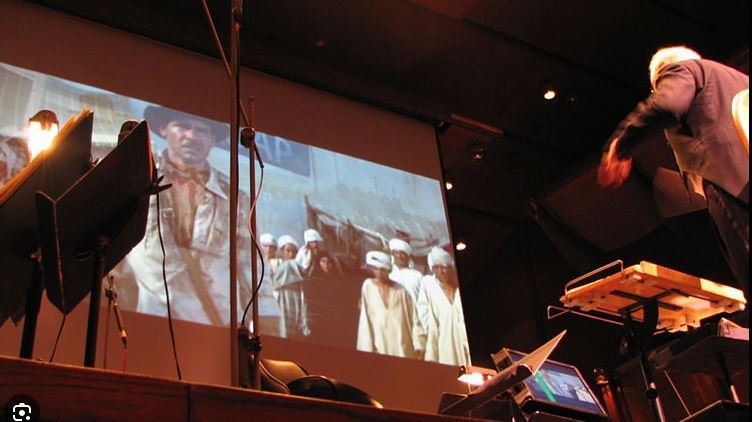
Rock music has a profound ability to influence emotions, making it a powerful tool in film scoring. By integrating rock anthems and ballads into movies, filmmakers amplify the emotional impact of their scenes, creating a deeper connection between the audience and the narrative. This exploration delves into how rock music enhances movie emotional impact, showcasing the synergy between powerful music and compelling storytelling.

Setting the Tone with Rock
Rock music sets the tone for various scenes, establishing the emotional atmosphere right from the start. For instance, the opening credits of “Guardians of the Galaxy” (2014) use Redbone’s “Come and Get Your Love” to set a nostalgic and energetic tone. Transitional to the pivotal moments, rock music can shift the mood, influencing how the audience perceives and reacts to the unfolding drama.
Amplifying Action Sequences
In action films, rock music intensifies the excitement and urgency of high-octane scenes. “Top Gun” (1986) exemplifies this with Kenny Loggins’ “Danger Zone,” which amplifies the adrenaline-pumping sequences of fighter jets in flight. Transitional to another high-energy example, “Baby Driver” (2017) synchronizes rock tracks with meticulously choreographed action sequences, enhancing the film’s rhythm and impact.
Deepening Emotional Scenes
Rock ballads can evoke profound emotions, adding depth to dramatic and intimate moments. In “The Breakfast Club” (1985), Simple Minds’ “Don’t You (Forget About Me)” underscores the film’s emotional climax, encapsulating the characters’ shared experiences and feelings. Transitional to another touching example, “Almost Famous” (2000) uses Elton John’s “Tiny Dancer” to create a poignant moment of connection among the characters, reinforcing the film’s emotional resonance.
Creating Nostalgia and Connection
Rock music often evokes nostalgia, connecting viewers to specific eras or personal memories. “Dazed and Confused” (1993) uses a soundtrack filled with 1970s rock hits to transport the audience back to that era, enhancing their connection to the film’s setting and characters. Transitional to another nostalgic use, “Shrek” (2001) employs rock classics like Smash Mouth’s “All Star” to add a modern, humorous twist to its fairytale narrative, creating a multi-layered emotional experience.
Enhancing Character Development
Rock music can also reflect and enhance character development, illustrating their personalities and emotional journeys. In “Bohemian Rhapsody” (2018), Queen’s music not only narrates the band’s rise but also mirrors Freddie Mercury’s internal struggles and triumphs. Transitional to another example, “Rocketman” (2019) uses Elton John’s hits to explore his personal growth and challenges, deepening the audience’s understanding of his character.
Building Tension and Anticipation
Rock music effectively builds tension and anticipation in films, heightening the stakes of critical moments. “The Matrix” (1999) uses Rage Against the Machine’s “Wake Up” to enhance the film’s revolutionary themes and suspenseful action sequences. Transitional to another example, “Fight Club” (1999) employs a mix of aggressive rock tracks to escalate the film’s intense and unpredictable narrative.
Highlighting Key Themes
Rock soundtracks can underscore and amplify key themes within a film, reinforcing its central messages. “Pulp Fiction” (1994) uses an eclectic mix of rock, surf, and pop music to emphasize the film’s fragmented and nonlinear narrative structure. Transitional to another thematic exploration, “The Big Lebowski” (1998) integrates Creedence Clearwater Revival’s “Lookin’ Out My Back Door” to complement the film’s laid-back, yet surreal tone.
Conclusion: Rock Music’s Emotional Influence
Rock music plays a crucial role in enhancing the emotional impact of movies, from setting the tone and amplifying action to deepening emotional scenes and creating nostalgia. Its ability to resonate with audiences on a personal level makes it an invaluable asset in film scoring. As filmmakers continue to harness the power of rock music, the genre’s influence on cinema will undoubtedly remain profound, shaping the emotional landscape of countless films.






